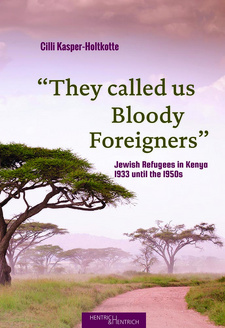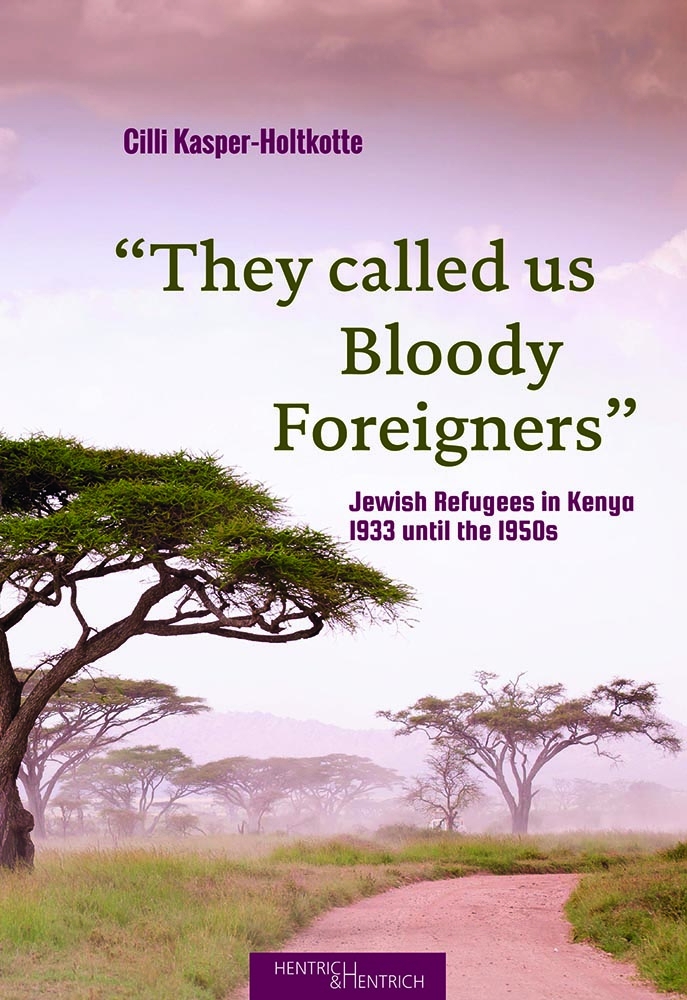They called us Bloody Foreigners. Jewish Refugees in Kenya, 1933 until the 1950s, by Cilli Kasper-Holtkotte.

"They called us Bloody Foreigners". Jewish Refugees in Kenya, 1933 until the 1950s. Publisher: Hentrich & Hentrich. Berlin, Germany 2019. ISBN 9783955653613 / ISBN 978-3-95565-361-3
Introduction and acknowledgements to "They called us Bloody Foreigners". Jewish Refugees in Kenya, 1933 until the 1950s, by Cilli Kasper-Holtkotte.
Moving into a new terrain means getting to know the new, the unexpected, the surprising and the unplanned. All this undoubtedly applies to most of the Jewish refugees admitted to Kenya from 1933 onwards and equally, albeit in a figurative sense, to my investigation, which was tantamount to a search for clues. My initial assumption that this was a manageable, conveniently researchable subject quickly proved to be the result of ignorance. The very first conversations with the contemporary witnesses made one thing clear: extremely detailed research would, be inevitable and even then, lucky coincidences would also be of need. Even the question of how many Jewish refugees reached Kenya after 1933 was not easily answered - much less where they came from, where and under what conditions they reached East Africa, or how they settled and built new livelihoods. Except for Walter Zweig, I did not know a single refugee by name. I did not ask myself why some refugees had lived in Nairobi and others in rural areas. All this only became clear to me over the course of my search for traces, which, to name but one discovery, showed me the enormous differences between the refugees living in Nairobi and those living in the countryside. There could be no question of a homogenous group. The fate of the Zweig family, novelized by the daughter, Stefanie Zweig, was representative only in part. Only gradually did images of the refugees' lives in Kenya appear before my inner eye. They began to develop out of the many conversations with contemporary witnesses, with people who had lived in Kenya as Jewish refugees for some time or even since their childhood, and some of whom are still living there. The refugees created a world of their own from a completely unknown one in a laborious and often painful process. Everyone passed through and experienced it differently; each of these life stories is a different one and special. Should these narratives, should they still be tangible, be told? Little is known about Kenya as an exile country for Jewish refugees; the topic is largely a terra incognita. Kenya was unlike other exile countries. There was no peer group that refugees could join, nobody to provide help and orientation. Not even the whites in Kenya offered such a kindred community. The refugees were almost completely left to their own devices in a country that was alien to them from language, to the population, to climatic conditions, to modes of life. The white gentiles living in the country, sometimes even the white Jews, were not particularly sympathetic to them. At best, they ignored the unwelcome newcomers. This is reflected in the extensively available memoir literature: while life in Kenya is depicted in detail and many names are mentioned, Jewish refugees almost never appear, as if they had been invisible. Olga and Oscar Watkins's biographies are rare exceptions. What matters is this: many former Jewish refugees and their children and grandchildren have openly declared that it matters greatly to them to finally be seen. Their stories should no longer be overlooked now, nor be forgotten later. This is one of the first and arguably most important messages that I received in the course of my conversations, and this is what I see as my mission. The above should make clear that many life stories have been told to me, and that they cannot be transformed into an entirely sober and objective presentation. When these stories are told, the meaning of forced emigration to Kenya, both in the short and the long term, is always on the mind of the narrators. [...]
This is an excerpt from "They called us Bloody Foreigners". Jewish Refugees in Kenya, 1933 until the 1950s.
Titel: "They called us Bloody Foreigners"
Subtitle: Jewish Refugees in Kenya, 1933 until the 1950s
Author: Cilli Kasper-Holtkotte
Translation from German: Alexandra Berlina
Publisher: Hentrich & Hentrich
Berlin, Germany 2019
ISBN 9783955653613 / ISBN 978-3-95565-361-3
Softcover, 16 x 24 cm, 286 Seiten, 140 b/w photos
Kasper-Holtkotte, Cilli im Namibiana-Buchangebot
They called us Bloody Foreigners. Jewish Refugees in Kenya, 1933 until the 1950s.
"They called us Bloody Foreigners". Jewish Refugees in Kenya analyses arduous inner and outer battles of the histories of many refugees stranded in Kenya.

